
Unit 20 and 24
Task 1: Research Portfolio
Learning Outcome 1 (U20): Know how existing advertising campaigns embed advertisements across a range of media products (P1, M1)
Learning Outcome 1 (U24): Understand the products that are produced within and across media industries (P1)
BANG ENERGY DRINK INFLUENCERS AD
Different media companies use different products within the advertising that can be used for different businesses to help promote what they're selling, and make use of cross-media.
- Social media
- Posters
- Billboards
- Radio ads
- Video ads
- Flyers
- Magazine ads
- Newspaper ads
How products are adapted across media platforms –
It is important to understand and adapt around your market and their preferences to try and receive as much engagement as possible. It is vital to change methods of advertising dependent on the platform. For example, a static billboard ad would not work on social media as it doesn’t fit the codes and conventions properly and would lead to it becoming unpopular. You would be better of creating an advert that has dynamic factors and intrigues the audience and makes them feel involved and excited such as a video advertisement.
- How is a brand created across different products and platforms
A brand is created by sticking and keeping to the them and idea that your brand has created and built, by doing this people start to associate things with your brand it grows from there. Utilise social media to create events for consumers and to keep interacting with them to further your brands reputation. Use traditional methods such as printed leaflets to send to customer’s address to keep them updated with the progress of the brand. When creating a website, you can also utilise the use of the email reminders and cha groups to keep engagement up.
Podcasts and blogs are also a great way to interact with customers.
-How do they engage in different target audiences
Engage with customers and create a voice for the brand that customers can resonate with and listen too. It is also vital to offer something to the customers that is unique and engages them. If you can’t do this, then they will not tune in to listen anymore and you will lose customers. Offer your customers something that seems exclusive and is only available to them and they will feel special and come back for more.
P1 (U20): Describe an existing media advertising campaign:

Coors Light #CouldUseABeer
Platforms used: Twitter
The #coulduseabeer campaign was an ingenious way of Coors light engaging there customers via a social media campaign and a giveaway utilizing social media hashtags.
What Coors Light did:
Coors Light has had some of the cheekiest campaigns lately, including their Clone Machine, which lets users record a 30-second video loop of them looking interested during video-conferences so that they can sneak away to grab a beer. Genius.
That idea came hot on the heels of their latest social media marketing campaign, #CouldUseABeer. For a limited period of time, Coors Light promised a six-pack to anyone who tweeted at them using the campaign hashtag.
What did Coors do right?
They utilized the current climate so well and capitalized on the fact that people were stressed and upset due to Covid 19. They also proved that timing is everything and when it’s your brands turn in the spotlight.

Aims and Objectives
The aims of Coors were to create an advertising campaign for over 21 year olds to create engagement with the brand. By offering out free beer with a simple hashtag the customers don’t have to do anything strenuous apart from create a post promoting Coors light which costs Coors light a 6pack of there beverages.
The objective was to promote their brand via viral marketing which worked for them as they gave away over 500,000 packs of beer, the engagement they will have got through the campaign will have been in the tens of millions.
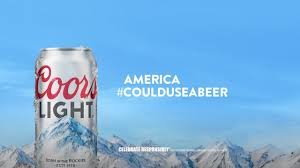
This ad was running when the corona virus was at its peak in the summer of 2020 in the USA. The ad utilized the fact that people were down and upset due to the pandemic and how it was affecting the USA and also the globe. Coors light described the times as “sucky” and used I throughout their campaign. They had long conversation trying to articulate what the average American would be feeling like and came to the conclusion that it was sucky. Their campaign was great in the sense that it gave people something to do whilst at home. Create short video, shout out a friend and ask for a beer using a simple hashtag. It was ingenious!
Choice of media
As the campaign was run via a hashtag and updates were provided through the Coors light twitter account it meant that there were multiple platforms that could be used such as, Twitter, Instagram, Facebook, Reddit and any social media where hashtags were available. They ran the campaign through digital graphics posted to their twitter and also uses traditional methods such as billboards where the hashtag was printed so it could reach a mainstream audience too.
With a following of over 130 thousand twitter followers word got out quickly of this giveaway campaign and so many people got involved.

Target audience
As their target audience automatically was people over the age of 21 due to the legal drinking age in the USA, this meant that their audience was people over that age category.
Image above shows a 93-year-old getting involved in the campaign further proving the vastness of the age range of the campaign.
It targeted the working class (NRS social grade B, C1) as arguably they were the one affected most badly by the pandemic. It took on-board the fact that people were struggling at home and times were “sucky” and linked the use of alcohol to bad times and suggested that it made them more bearable.
Key message
The key message that Coors light pushed was that due to the pandemic, there was nothing wrong with relaxing and having a beer. This message really resonated with the audience as Coors had manipulated the pandemic and used it to their advantage which is marketing gold. The other message was that you could still have fun using social media to get involved in things and also get your friends engaged too, improving relationships across the USA.
Approach
The approach was in 2020 meaning social media was very important to its success. They took an approach that would lead to viral marketing and interactivity with customers. By using the hashtag they allowed anyone to interact.
Representation
As it’s a unisex beverage brand, it was aimed at anyone above the age of 21 regardless of gender or sexuality. However, it could be argued that Coors light being a beer means that it will attract more males than it will females, however it did not discriminate.
Campaign logistics
The campaign began on twitter and carried on until they had given away 500,000 six packs. This was stated at the start of the campaign that it would be a limited giveaway and would end then, however the media coverage the campaign got boosted sales drastically.
Call to action
Call to action for any campaign should be strong, and persuasive to get your target audience to act now and buy the products. Without this in place it could mean that your target audience can go elsewhere.
The call to action on this campaign was to get people involved utilizing the fact that they knew people were at home and not active therefore it was the perfect time to drink a beer and relax.



ABOUT SKYLINE
I'm a paragraph. Click here to add your own text and edit me. It’s easy. Just click “Edit Text” or double click me to add your own content and make changes to the font. I’m a great place for you to tell a story and let your users know a little more about you.
Think small – Volkswagen beetle 1959
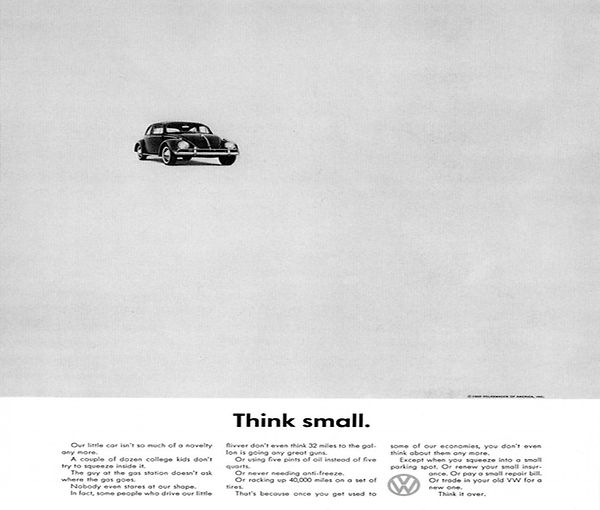
Background
Fifteen years after World War II, the United States had become a world and consumer superpower; and cars began to be built for growing families with Baby Boomer children and "Americans obsessed with muscle cars
The Volkswagen beetle was created in a Nazi factory in WW2 so was hard to pitch to the American public. It was small and compact unlike the other cars at the time that were big and outlandish. Car commercials back in the 50s were wordy and based on selling a fantasy rather than a reality which wasn’t possible with the beetle as it was German manufactured car. Therefore they decided to take a diverse minimalist approach to the advertising which was unseen in the 50s.
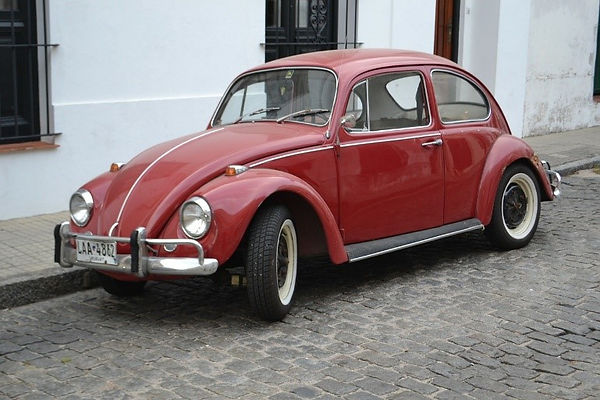
Aims and Objectives
The unorthodox use of advertising here created a questioning audience which is what VW wanted. The aim was to sell a completely new car in a pretty saturated market which they managed to do through the excellent advertising. Their objective was to make this German produced car into a household name in the USA. They did so by making the car more minimal and didn’t include a lot of information about the car which went against the current standards for advertising. This led to an almost mystery among the consumers as they were used to a sugar coated, exasperated advertisement which over sold the car.
As the ad ran a few years after WW2 there was a surplus of cars that the Americans had from the Germans due to reparations that they took from germens therefore leavingthem with hundreds of thousands of good cars to sell to the American public.
Choice of media:
The opposite of Coors, VW were advertising the think small campaign in the 1950s, therefore the access to mobile devices and electronic devices were obsolete due to lack of advancements in technology.
Therefore, traditional methods of advertisement were used such as bill boards, posters, magazine and newspaper ads.
The Ad was running simply in black and white colour and could be printed onto anything.
Target audience
The target audience again was similar to that of Coors light as you had to be over 18 to drive a motorised vehicle therefore the ad only being useful to people over that age.
The ad will have been aimed at men due to the social standards of that time.
Woman did not read newspapers and they were discouraged from driving therefore aiming it towards a male audience.
Key Message
The key message for this ad was to change the American public’s view on smaller cars and it was also to change the way of advertising and how the public perceived advertisements.
Approach
Volkswagen marketing team took an extremely different approach to the advertisement of the VW beetle. They went for a minimalist design on the ad and kept the campaign short and snappy, “Think small.”
Representation
The campaign was representative of the older generations as it was designed for people who could drive, therefore representing a male, young adult to old adult audience.
Campaign Logistics
The idea of the campaign was to rebrand this German manufactured car and sell it as an American household car. This was difficult due to it being post war and the dust was yet to settle. The campaign managers and VW utilised Americas industrial supremacy and global super state to mass sell this simple car.
One of the main components of the campaign was the simplicity of the design of the ad. It is said that this ad revolutionised modern advertising and diversified the market completely.
Call to action
The idea was to get the consumer to purchase this cheap affordable car and replace there big, diesel draining workhorses for a simple, affective beetles. This was effectively done through beetle’s simple advertisement which was innovative and exciting for its time.
They were successful in this sense as the advertisement has been remembered to this day.
Regulatory Bodies – Coors and Beetle campaigns
Advertising standards authority - The ASA are an advertising agency that regulate advertisement. They make sure companies that are advertising are within the guidelines of advertisement and are not doing anything illegal and they will respond to consumer complaints
The CAP (Committee of advertising practice) – CAP are linked to the ASA and write the rules for the ASA.
Legal and ethical issues for the two:
Coors will have to be careful who they market too as they are selling a age restricted product meaning that if a child gets hold of their beverage through the campaign, they could face serious legal action. Similar to this, the Beetle campaign could get in trouble if someone under the legal driving age is caught in one of their cars, it could lead to serious legal action being taken.
M1 (U20): Evaluate different cross media advertising campaigns for consistency of message
Using the #coulduseabeer campaign utilised by Coors light we can see they keep a consistency and message throughout that links each of their ads no matter the media it is portrayed on.
They keep to the message of everything being “sucky” and compare it to other times in history where alcohol has made things easier and helped people get through things.
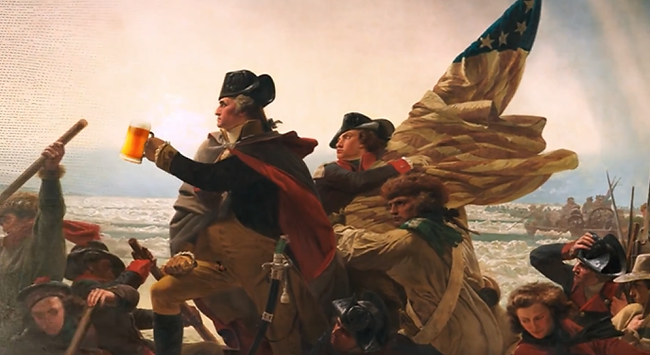
The YouTube advertisement that was also run on radios and on television depicts a message that says that through the hardest times in history beer has been used to help the people through it. It cleverly compares the corona virus pandemic to these times and makes it so there is a correlation between historic events and modern day issues and links the fact that people should be relaxed and to have a beer.
This can be compared to the twitter ad they ran alongside the video ad.
They utilised the use of hashtags to help the audience interact with the giveaway.
The #could use a beer could be used by anyone over the age of 21 and they would have to shout their friend or themselves out on their public social medias so they had the chance to win the six pack of beer.
The hashtag itself links to the ad as it links the “sucky times” by saying ‘I could use a beer right about now!’ Suggesting that due to the stress to the pandemic that they were down and upset and that beer would help them out.
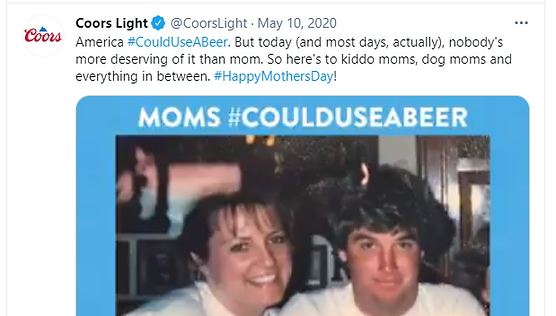
The consistency remained within the traditional methods of advertising such as the billboards, posters, magazine ads as they all contained very little apart from the hashtag #coulduseabeer. This can be linked to the VW ad due to the simplicity of the advertisement drawing the customers in to find out what the hashtags lead to by searching it up on their phone.
The simplicity of the message mean that customers seeing it repeatedly would eventually search it up.
One of the weaknesses of the campaign is due to the limited time of the giveaway and the cap of beer set at 500,000 it means that the hashtag will have become obsolete within a couple weeks as all the beer would have been given away. This means the advert was time bound and temporary.
Another weakness was due to the age limit and a huge demographic of social media users being under this age category it meant that they couldn’t utilise one of the biggest demographics of social media users due to the age restrictions on alcohol.

One of the other ads that can be talked about with consistency of messaging is the think small VW advertisement.
The goal of this advertisement was to change the course of advertisement in the 1950s and it did just that. It used minimalist design in comparison to other car ads that rambled on with words and hundreds of letters. This separated this ad from the others and really intrigued consumers due to the weird nature of the ad.
In this picture we see a very simple white background and a small image of a VW beetle with the letters, Think small.
This was a brilliant ad as it did what it wanted and made the customers read a hundred words without the hundreds of words. It made them thin about the car and loo more into it which is what a lot of ads nowadays are, a few words or a hashtag that leads you to a website.
This think small kept consistency in the sense that every ad after that that came from Volkswagen was very minimalist and didn’t contain a lot of writing and was mostly images.
As the advert was ran over 60 years ago the only real forms of advertisement they had were traditional forms such as billboards and posters meaning they couldn’t differentiate at the time but the think small ad has led to huge things in the modern day.
P1 (U24)
Describe the media products for the advertising industry, including an assessment of the way in which products are adapted, and institutions create brands and cross-media products across platforms to engage audiences.
There are many media products that have been adapted over time in order to keep up with the changing technology and quality of advertisement.

Print advertisements had initially begun in newspapers. Printing advertisements is one of the first recorded forms of physical advertisement and has been used for decades. Print advertised has developed now to more complex designs and technology has allowed for this to take place making the design more appealing to the human eye and more colorful and exciting.
Audio visual
These adverts are relatively new as they have come from the development of social media and technology allowing these complex yet compelling advertisements to take place. TV adverts have been around since the creation of the television and are the most common, however, audio visual ads are now moving over to social media and are becoming shorter and shorter to meet audience demand.

Here is an image of the very first TV ad ran by the company Bulova, a watch brand in the 1940s:

TV ads have progressed over time and now contain CGI and cartoon to make the ads more appealing to the audience.

We can observe the advancement in human behavior towards audio visual advertisements as they contain a lot more information a short space of time. Attention spans have decreased dramatically since the creation of mobile devices meaning that for an advertisement to be successful, it must be colorful, short and loud to get the viewers attention.
TV adverts are mostly viewed on mobile devices now and on social media also.
Web and digital:
these kind of advertisements are viewed on mobile devices in short spaces of time. These ads will flash on your screen for seconds and then disappear, yet, they are very effective. These ads will be running on social medias like tik tok, Instagram, YouTube and Facebook. These ads will mostly be viewed by people on the go or browsing their socials. These advertisements are also Taylor made for the person watching as the device will pick up data from you and share it to these ad companies.

In game advertisements:
These have boomed with the progression of games and gaming devices. By offering places in game loot and rewards by watching an ad, this has found to be one of the best money making ads to this day. It is excellent for companies to advertise products and is very clever in the way that it rewards players with monetary value for watching these ads.

Animation:
With the advancement of tech and the ability to render great CGI images into ads, it is become a great way for brands to express themselves through this form of art. Animation is great for creating mind blowing fairy-tale like ads which separates the product from reality and animates the product to life giving it features it doesn’t really have. An example of this is the MandM duo who are just a chocolate sweet but in the ads they have personalities and talk. This resonates with the viewers and makes them want to buy the brand.
Audio:
These ads again ad a voice and personality to the brand. They are commonly run on radio and podcasts. A successful radio ad is defined by its memorability. Creating an ad that people will sing or repeat is free marketing for the company and the catchier the ad, the better. The radio ads run for a short period of time which means the creators must be creative and clever.
In conclusion, advertising had progressed drastically over the past 50 years and the goal for advertisers now is to create the shortest most informative and eye catching ad they can.
Bibliography
https://images.app.goo.gl/E4VVoeq7WM8Uf5oi6
https://images.app.goo.gl/DU8ZbW3wEwg7h1sS6
https://images.app.goo.gl/diwNj8QiRMznBqWE7
https://medium.com/theagency/the-ad-that-changed-advertising-18291a67488c
https://medium.com/theagency/the-ad-that-changed-advertising-18291a67488c
https://www.lbbonline.com/work/42804
https://twitter.com/coorslight/status/1259552999640379393?lang=en
https://images.app.goo.gl/Gx3wrxq6r2bVFbnZ8
https://images.app.goo.gl/PqnJCxq5SqRCYk4b8
https://images.app.goo.gl/tn3ethvuXdwFsk269
https://images.app.goo.gl/4FKchxoq22ZVKN8A6
https://images.app.goo.gl/YDCyn7Bxkfo2rwrb6








